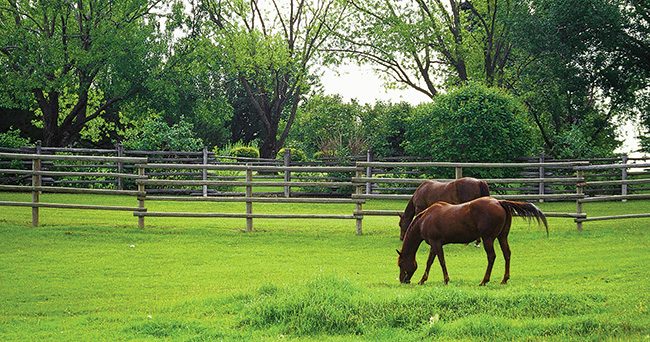American Farriers Journal
American Farriers Journal is the “hands-on” magazine for professional farriers, equine veterinarians and horse care product and service buyers.

Since research indicates non-structural carbohydrate levels peak in the afternoon and early evening, these concerns can be avoided with early morning grazing.
Research conducted in Australia offers strong circumstantial evidence that the fructans found in the hindgut of horses can trigger laminitis, says noted hoof researcher Chris Pollitt.
He says pastured horses can rapidly ingest fructan-rich grasses that are actually higher than the levels that have been used to induce experimental laminitis by scientists.
A member of the International Equine Veterinarian Hall Of Fame, Pollitt is involved with the Australian Equine Laminitis Research Unit within the School of Veterinary Science at the University of Queensland in Gatton, Queensland, Australia.
Since most horse owners are committed to pasture-feeding programs, Pollitt says a combination of pasture- and horse-management practices is essential in preventing laminitis.
Some grass species are notorious fructan accumulators that are actually selected and bred for sugar content and should not be fed to horses. In fact, the non-structural carbohydrate (NSC) content of grass can reach 56% of its total dry matter (DM). Fructan will often make up 44% of this amount.
Pollitt says actively growing grass tends to store less NSC. Maintaining soil moisture and fertility while keeping grass short by mowing or grazing encourages leaf growth and decreases NSC production. Since research has shown NSC levels peak in the afternoon and early evening, high NSC intakes can be avoided with early morning grazing. Since pasture areas shaded by tree lines and windbreaks tend to accumulate less NSC…